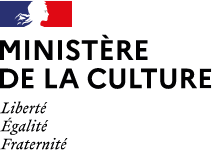Few countries the size of Belgium can boast such rich artistic history. As early as the tenth century, the urban centers emerging in Flanders, Brabant or Hainaut were among the most dynamic of their time, rivaling the most beautiful cities of the Middle Ages in France, Italy, and beyond. Manuscripts, altarpieces, and tapestries produced in the workshops of Antwerp, Bruges, Brussels, and Tournai formed the basis of a lucrative commercial activity that developed rapidly over the following centuries. Rogier Van der Weyden and Jan Van Eyck represent two of the fifteenth century’s greatest masters, while the religious and secular architecture of the period also rank among the most remarkable on the continent.
Considering the territory’s limited size, its active and continuous involvement in international networks has been key. As of the Middle Ages, artists, craftsmen, and architects traveled and exported their skills across Europe and later around the world. After the Reformation and the division between the Southern and Northern Netherlands in 1581, there was a prodigious artistic and cultural effervescence in the southern regions. The international stature of artistic production in seventeenth-century Belgium was embodied by Pieter Paul Rubens. In the second half of the nineteenth century, Brussels transformed into a cosmopolitan city welcoming artists and intellectuals of all origins, notably Charles Baudelaire. In the 20th century, Belgium continued to develop into an important cultural hub. Today, the excellence and dynamism of the Belgian arts scene continue to stand out, whether in cinema, visual art, dance, fashion, design, architecture or, of course, comics. In all these domains, Belgian creatives are distinctive contributors. While the country is small, its reach is wide, and artists play important roles. In presenting the history of Belgian art at the Festival, we are spoiled for choice.
The question is therefore about choosing which aspects of “Belgian” Art History to emphasize — a history that cannot truly be told in terms of national identity. For the nation’s borders have been as fluid as the limits of its territory, modified intermittently according to wars and the formation of new alliances between European powers. When new borders were drawn following the declaration of independence in 1831, the fledgling kingdom sought to assert its identity by inventing an imaginary past. At the same time, it joined the race for industrial competitiveness and colonized territories in Central Africa. Even today, the political and cultural history of Belgium is marked by identity issues between Flemish and Walloon communities. And the scars left by the colonial past have proved difficult to heal. Therefore, instead of narrating one national art history, the Festival will tell multiple stories, navigating amidst clichés without becoming fixated on them. This is the stance taken with our programming: we propose a history of art without borders, a history of dialogue and geographical complexity, without insisting on pat answers or strict borders.




